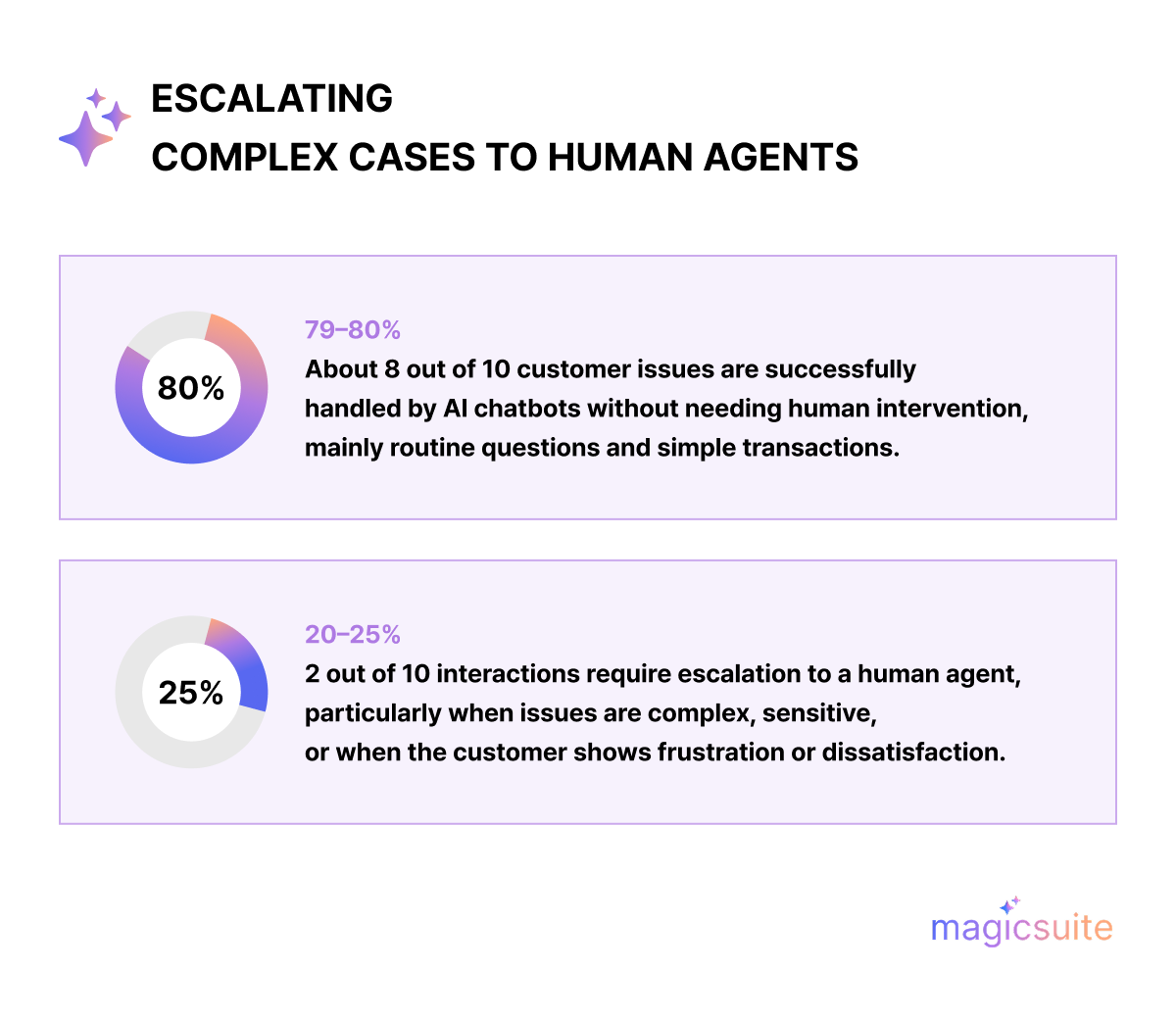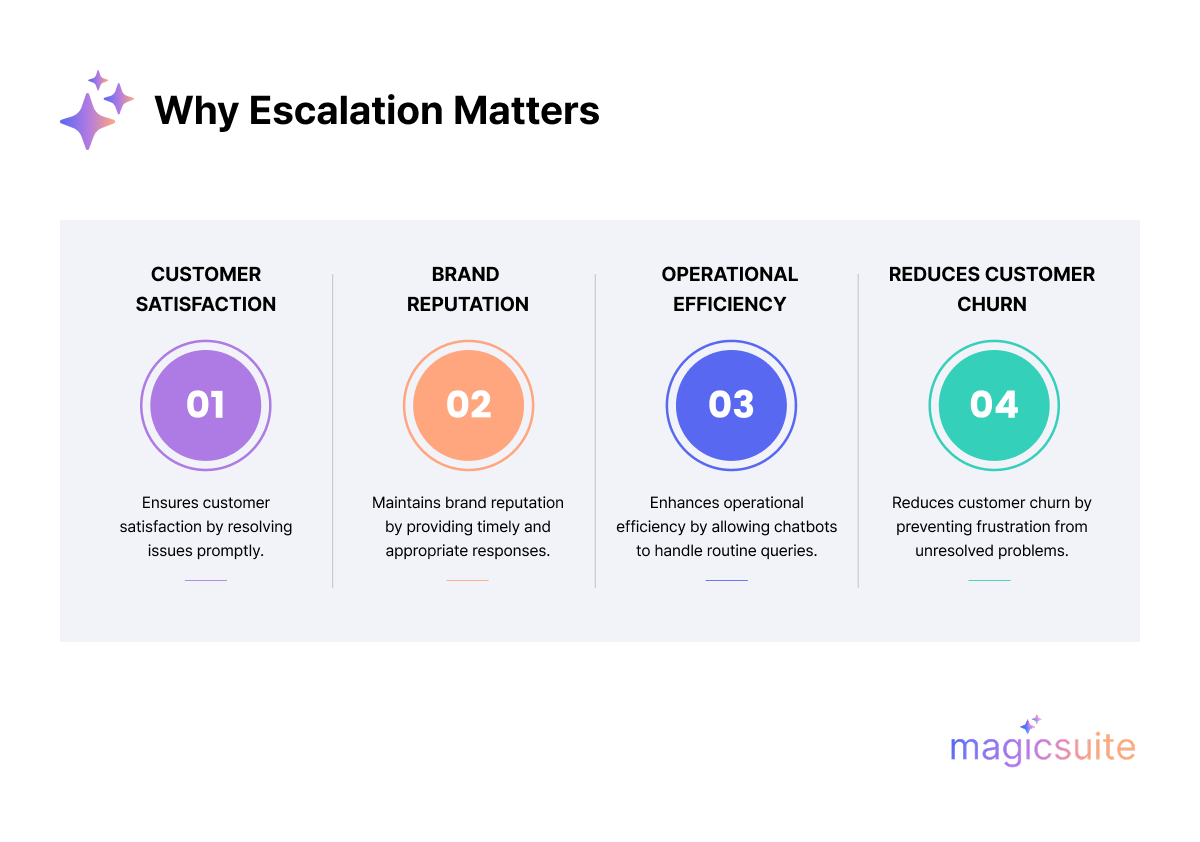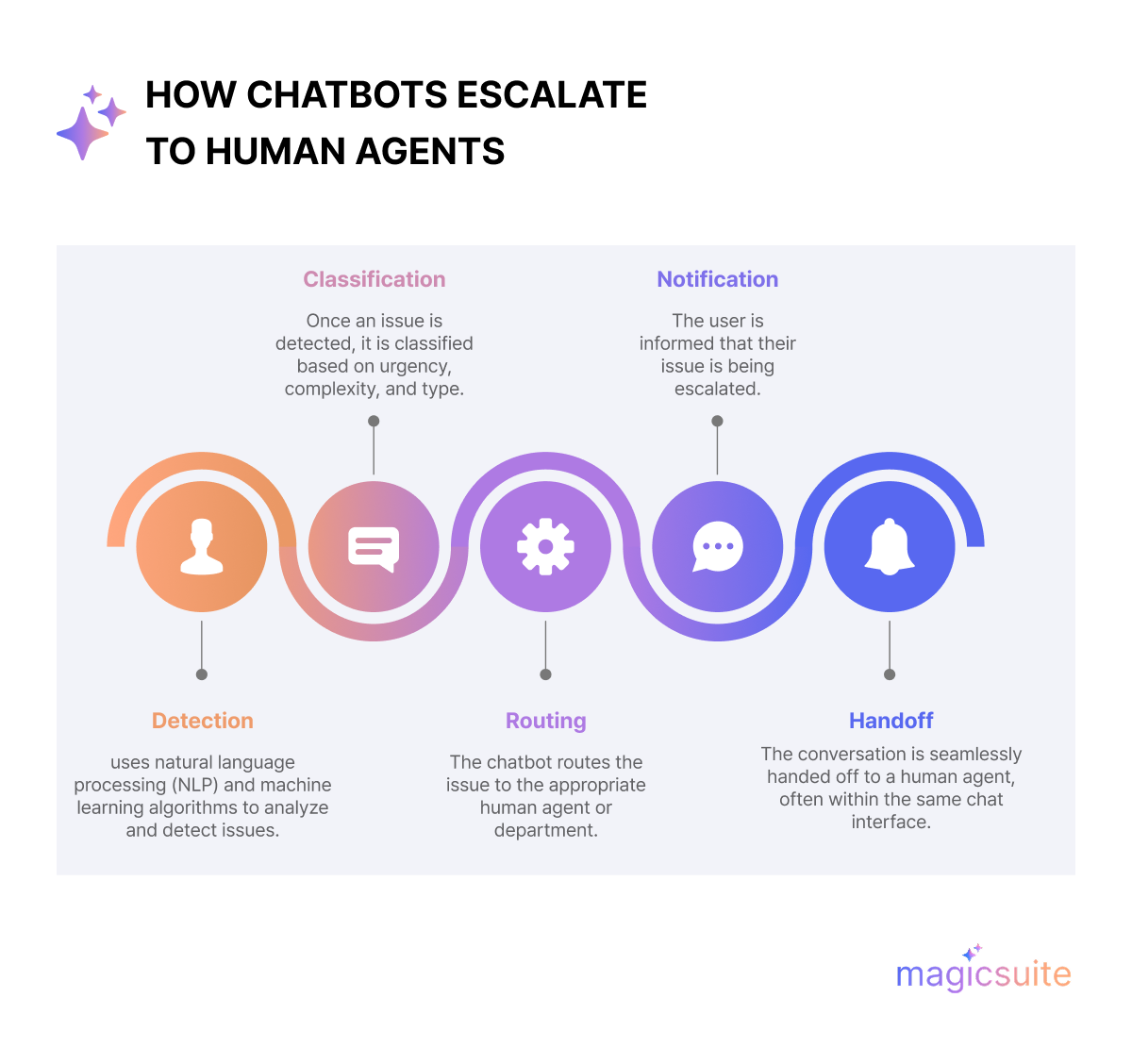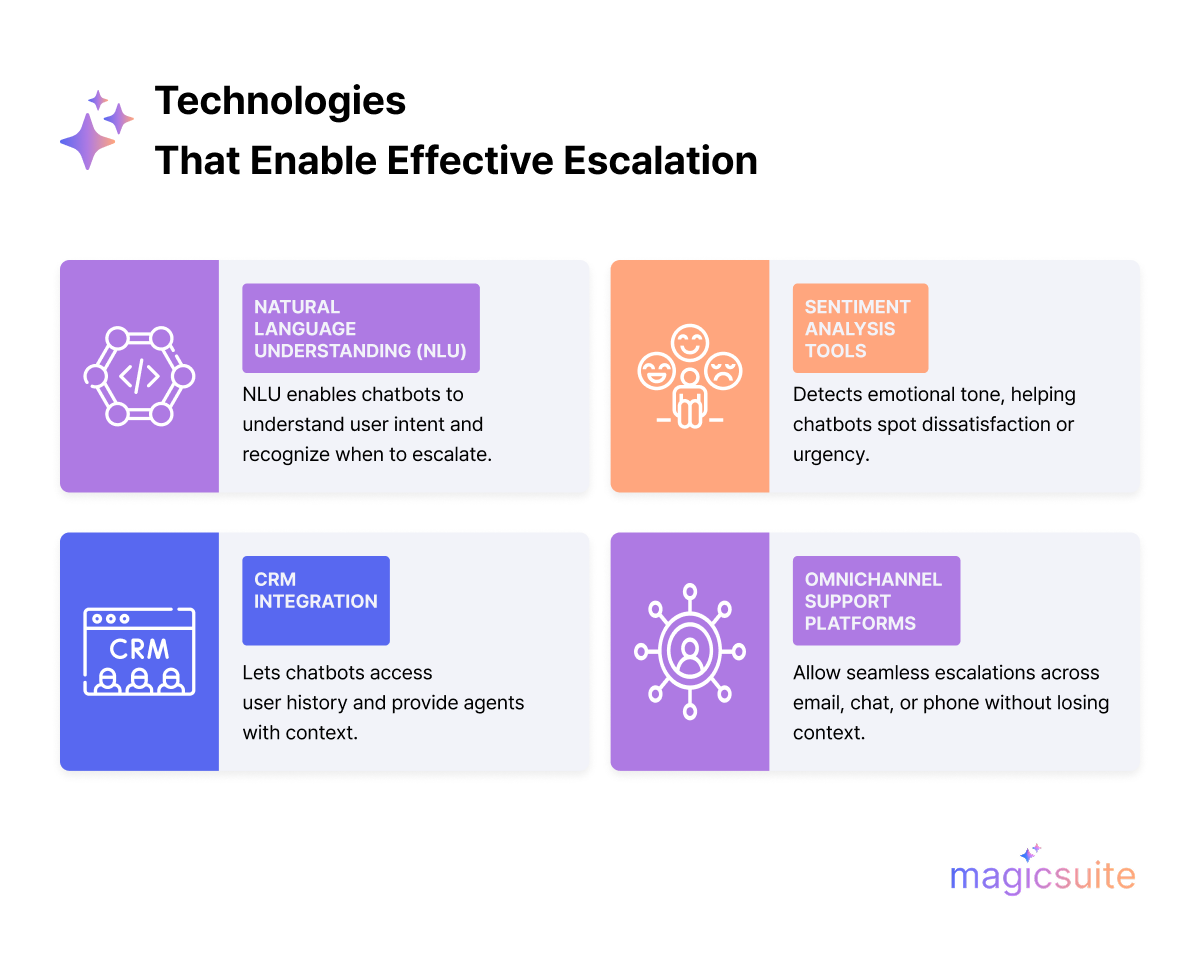Learn how AI chatbots resolve most customer issues and smoothly escalate complex cases to human agents, ensuring fast, empathetic, and effective support

AI chatbots are increasingly deployed to handle routine customer interactions, resolving up to 80-90% of inquiries autonomously. But when conversations become more complicated, sensitive, or when customers show frustration, the chatbot knows it’s time to pass the conversation to a real person. Some issues require human insight and empathy to be adequately solved.
AI Chatbots have become vital tools for businesses aiming to provide quick, efficient, and cost-effective customer service. They help cut operational costs by nearly 30% and boost customer satisfaction. This article shows how AI chatbot conversations can smoothly hand off challenging problems to human agents, making sure customers always have a good experience.

AI chatbots automate FAQs, simple transactions, and data gathering. According to industry reports, AI resolves 8 in 10 customer issues without human help in leading customer experience centers. Chatbot agents act as the first line of contact, guiding users and filtering requests that need escalation.
Chatbot escalation refers to the process by which a chatbot identifies a situation it cannot resolve and transfers the conversation to a human agent. This transition is crucial in maintaining customer satisfaction and ensuring that complex or sensitive issues are handled appropriately.

AI-powered chatbot conversations are designed to handle a wide range of tasks, from answering FAQs to processing transactions. However, there are clear indicators that signal the need for human intervention. The most common technical triggers include:
If the chatbot’s NLP model is unsure (confidence drops below a set threshold, often 70% or lower), the conversation is flagged for escalation.
Modern chatbots use real-time sentiment analysis to spot user frustration or anger. Studies show that AI can detect negative tone and emotions with over 90% accuracy, which signals the need for human involvement.
Phrases like "agent," "human," or "not helpful" automatically activate the escalation workflow.
Sensitive areas (finance, healthcare, legal) automatically escalate queries involving compliance, privacy, or policy concerns, sometimes even before the user asks.
If identity verification fails, escalation is necessary for security reasons.
If a user repeats the same question multiple times, it may indicate that the chatbot’s responses are insufficient.

The chatbot uses natural language processing (NLP) and machine learning algorithms to analyze the user's input and detect when an issue is beyond its capabilities.
Once an issue is detected, it is classified based on urgency, complexity, and the type of assistance required.
The AI chatbot routes the issue to the appropriate human agent or department. This may involve:
The user is informed that their issue is being escalated and may be given an estimated wait time.
The chatbot conversation is seamlessly handed off to a human agent, often within the same chat interface, preserving the context and history.
Several technologies work in tandem to facilitate smooth chatbot-to-human transitions:

NLU allows chatbots to comprehend the intent behind user messages, enabling them to recognize when they’re out of their depth.
These tools evaluate the emotional tone of user inputs, helping chatbots identify dissatisfaction or urgency.
By integrating with Customer Relationship Management (CRM) systems, chatbots can access user history and provide agents with valuable context.
These platforms ensure that escalations can occur across multiple channels—such as email, live chat, or phone—without losing continuity.
To ensure that escalations are effective and enhance the user experience, businesses should adopt the following best practices:
Set clear criteria for when and how escalation should occur. You can use AI to refine these rules based on real-world interactions continuously.
Ensure that the entire conversation history is transferred to the human agent. Avoid forcing users to repeat themselves.
Inform users when escalation is happening. Offer transparency about wait times and next steps.
Equip agents with the tools and training to handle escalated issues efficiently. Encourage empathy and problem-solving skills.
Monitor transfer rate and aim for <10% of chats escalated, indicating a well-trained bot. You should also track wait & resolution time and strive to minimize queue times and speed post-handoff resolutions.
Lastly, maintain ≥90% satisfaction for escalated interactions. Analyze chat logs to refine intents, update knowledge bases, and expand fallback trigger definitions.
Read more on What is MTTR: A Metric SMEs Can’t Ignore
Open Universities Australia, the largest higher education marketplace in Australia, sought to enhance how it engaged prospective students by partnering with LivePerson to deploy a generative AI chatbot that simulates the conversational style of their best student advisors.
This AI agent handles initial inquiries effectively, achieving average response times of only 6.3 seconds compared to nearly 2 minutes by human advisors. As a result, OUA more than doubled its lead qualification rates and improved customer satisfaction, while also boosting advisor efficiency.
Sephora’s AR-powered Virtual Artist bot handles basic makeup queries but proactively escalates to human beauty advisors for nuanced product recommendations. It collects user preferences, then seamlessly transfers the chat with full context, boosting both CSAT and conversion rates.
Erica detects signs of fraud or disputed transactions via NLP and instantly connects customers to fraud specialists. The handoff retains transaction history and chat context, enabling swift resolution of sensitive financial issues
Read more on How Bank of America’s Erica Boosted Earnings by 19% Using AI
UCHealth’s Livi flags emergency keywords (e.g., “chest pain,” “can’t breathe”) and escalates directly to healthcare professionals. It ensures patient details and symptom descriptions are securely transmitted, improving response times for urgent medical support.
E-commerce appTemu and payment platform Payoneer both allow users to type “talk to an agent” at any point. The systems verify agent availability, transfer the full chat history, and automatically summarize user issues before connecting, reducing repeat explanations and frustration.
Despite its benefits, chatbot escalation is not without challenges:
Chatbot escalation is the process where a chatbot transfers a conversation to a human agent when it cannot resolve the issue on its own.
They use technologies like sentiment analysis and natural language processing to detect frustration, confusion, or complex queries.
Yes, with omnichannel support, chatbots can escalate issues across email, chat, phone, and social media.
The issue is routed to a human agent, who receives the conversation history and continues the interaction without interruption.
By using AI-driven analytics, training agents, and integrating chatbots with CRM systems for better context.
We now live in an era where customer expectations are higher than ever. Businesses must strike a balance between automation and human touch. Intelligent AI chatbot escalation ensures that while automation handles the routine, humans are always ready to step in when it matters most.
For more insights on AI in customer service, stay tuned to our expert content and elevate your digital strategy today.
Stay connected with MagicTalk.ai for the latest insights, news, and trends shaping AI chatbots and customer service innovation

Ace is the product manager of MagicSuite and multiple other projects at Makebot AI. With extensive experience in product development and leadership, Ace ensures that each project aligns with market needs and delivers innovative solutions. Passionate about technology and automation, Ace plays a crucial role in shaping AI-driven products that enhance efficiency and user experience.